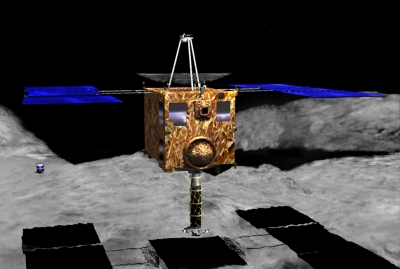
Hayabusa was a Japanese spacecraft that brought back a sample of asteroid material to Earth in 2010, after a mission riddled with technical glitches. The spacecraft touched down on a small near-Earth asteroid called 25143 Itokawa and safely brought back minute rocky particles for analysis.
The success of the mission inspired a successor spacecraft, called Hayabusa 2. This spacecraft is on its way to asteroid 162173 Ryugu and is expected to arrive in July 2018. Asteroid samples will be returned to Earth in December 2020.
In November 2010, JAXA said it had collected 1,500 grains that “were identified as rocky particles”; most of them were thought to come from “extraterrestrial origin” (meaning, the asteroid). JAXA had known beforehand that the particles of material were there, but it took several months of analysis to confirm they were not contamination from Earth or from Hayabusa’s voyage.
In the initial results, JAXA announced it found minerals such as olivine and pyroxene, which are common on Earth and have been found on the moon and Mars. The particles were tiny, just one-tenth the width of a human hair (10 micrometers in size). Several articles on Hayabusa’s dust collection appeared in the Aug. 26, 2011, issue of Science; among the findings was confirmation that the dust on 25143 Itokawa was identical to material on an LL chondrite type of meteorite. This finding confirmed showed link between meteorites and asteroids.
Picture Credit : Google

